
Radiological Physics and Technology
Scope & Guideline
Advancing knowledge in radiological science.
Introduction
Aims and Scopes
- Medical Imaging Techniques:
The journal covers a wide range of medical imaging modalities, including MRI, CT, PET, and ultrasound, focusing on advancements in image quality, processing algorithms, and diagnostic accuracy. - Radiation Therapy Innovations:
Research related to radiation therapy, including techniques like intensity-modulated radiation therapy (IMRT), proton therapy, and brachytherapy, is a core focus, emphasizing dosimetry, treatment planning, and quality assurance. - Artificial Intelligence and Machine Learning:
The integration of AI and machine learning in image analysis and treatment planning is a significant area of research, exploring novel algorithms for image segmentation, feature extraction, and predictive modeling. - Radiomics and Quantitative Imaging:
The journal promotes studies on radiomics, which involves extracting large amounts of quantitative features from medical images to improve diagnosis, prognosis, and treatment response assessment. - Quality Assurance and Safety:
Ensuring safety and quality in radiological practices is emphasized, with research addressing dosimetry, radiation exposure reduction, and the development of standards and protocols for clinical use. - Clinical Applications and Outcomes:
A focus on clinical studies that evaluate the effectiveness of new technologies and methods in real-world settings, assessing their impact on patient care and treatment outcomes.
Trending and Emerging
- Deep Learning and AI Applications:
The application of deep learning and AI in medical imaging and radiation therapy is rapidly expanding, with numerous studies focusing on improving diagnostic accuracy, automating processes, and enhancing treatment planning. - Radiomics and Personalized Medicine:
The rise of radiomics is notable, with increasing research emphasis on extracting and analyzing imaging features to tailor individualized treatment plans and improve patient outcomes. - Advanced Imaging Modalities:
Research on advanced imaging technologies, such as hybrid imaging systems (PET/MRI, PET/CT), is trending, reflecting a growing interest in multimodal imaging for comprehensive diagnostics. - Patient-Centric Approaches:
There is a notable shift towards research that considers patient experience and outcomes, including studies on reducing radiation exposure during imaging and enhancing patient comfort during procedures. - Real-Time Imaging and Adaptive Techniques:
Emerging interest in real-time imaging and adaptive radiation therapy techniques is evident, as researchers explore methods to adjust treatment plans based on real-time patient data and motion.
Declining or Waning
- Traditional Imaging Techniques:
There has been a noticeable decrease in publications focusing solely on conventional imaging techniques, such as standard X-rays and basic ultrasound, as newer technologies and advanced imaging methods take precedence. - Basic Dosimetry Studies:
Research centered around fundamental dosimetry without integrating advanced technologies or methodologies is less frequently published, indicating a shift towards more complex, technology-driven dosimetric research. - Non-AI-Based Image Processing:
The reliance on traditional image processing techniques is waning as deep learning and AI-based approaches dominate the field, leading to fewer studies focusing on non-AI methodologies. - General Radiation Safety Guidelines:
While radiation safety remains essential, the publication of general guidelines without innovative approaches or specific applications has decreased, reflecting a preference for research that offers novel solutions or technologies. - Historical Perspectives:
Papers focusing on historical reviews or past practices in radiological physics are less common, as the journal shifts towards contemporary issues and future challenges in the field.
Similar Journals

International Journal of Particle Therapy
Bridging Theory and Practice in Particle TherapyInternational Journal of Particle Therapy, an esteemed publication from the INT JOURNAL PARTICLE THERAPY, stands at the forefront of innovative research in the realms of particle therapy, radiology, and atomic physics. Established as an Open Access journal since 2015, it provides a platform for scholarly articles that drive the advancement of knowledge and practice in cancer treatment and radiation therapy. With an impact factor reflective of its rising stature, this journal has been categorized in the Q2 quartile for both Atomic and Molecular Physics and Radiology, Nuclear Medicine and Imaging as of 2023, illustrating its significant role in contributing to these vital fields. Researchers, professionals, and students alike will find the journal indispensable for accessing pioneering studies that explore the efficacy and application of particle therapy, ensuring that the latest advancements reach a broad audience. With a robust focus on bridging theoretical insights and clinical practices, the International Journal of Particle Therapy remains committed to enhancing patient outcomes and fostering collaboration among scientists worldwide.
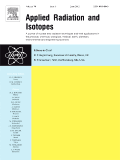
Applied Radiation and Isotopes
Exploring the Frontiers of Isotopic TechnologyApplied Radiation and Isotopes is a premier journal dedicated to the dissemination of high-quality research in the fields of radiation and isotopes, published by PERGAMON-ELSEVIER SCIENCE LTD. With a commendable impact factor reflecting its respected standing, this journal ranks in the Q3 category within Radiation according to the 2023 evaluation, emphasizing its relevance in the scientific community. Operating out of the United Kingdom, it has been a crucial platform for innovation and knowledge sharing since its inception, covering a wide array of applications ranging from the medical to the industrial sectors. Researchers can access a wealth of articles through its online platform, although it currently does not offer open access options. Applied Radiation and Isotopes is thus an essential resource for researchers, professionals, and students aiming to stay abreast of the latest developments in radiation physics and isotopic applications, making impactful contributions to the field.
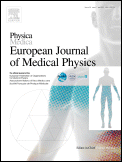
Physica Medica-European Journal of Medical Physics
Shaping the Future of Medical Physics ResearchPhysica Medica - European Journal of Medical Physics is a premier peer-reviewed journal published by ELSEVIER SCI LTD, dedicated to advancing the field of medical physics. Established in 1989 and serving as a critical platform for innovative research, this journal covers a broad spectrum of topics within biophysics, radiology, and imaging sciences, consistently ranked in the Q1 category across these disciplines. With an impressive impact factor that highlights its influence within the scientific community—ranking 52/333 in Radiology, 42/243 in Physics and Astronomy, and 35/152 in Biochemistry—the journal is a valuable resource for professionals, researchers, and students aiming to contribute to the technological and methodological advancements in medical physics. Physica Medica is committed to fostering open dialogue and collaboration within the global medical physics community, although it currently does not offer open access options. The journal's extensive citation history and ongoing relevance underscore its importance in the continuous evolution of medical science.
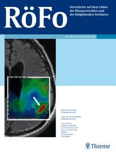
ROFO-FORTSCHRITTE AUF DEM GEBIET DER RONTGENSTRAHLEN UND DER BILDGEBENDEN VERFAHREN
Advancing the Frontiers of Radiological ScienceROFO-Fortschritte auf dem Gebiet der Röntgenstrahlen und der bildgebenden Verfahren, published by Georg Thieme Verlag KG, is a pivotal journal in the fields of radiology and nuclear medicine, offering invaluable insights for researchers, healthcare professionals, and students alike. With an ISSN of 1438-9029, this journal has been a stalwart of scientific communication since its inception in 1975, actively contributing to advancements in imaging techniques and radiation therapy. Although it operates under traditional access, the journal maintains a respectable standing, reflected by its Q3 ranking in Radiology, Nuclear Medicine and Imaging and Q4 in Medicine (miscellaneous), highlighting its significance in the scholarly community. Its coverage spans a wide array of topics pertinent to diagnostic imaging and therapy protocols, making it an essential resource for anyone seeking to understand the complexities of modern radiological practices. As the journal continues to evolve through 2024, it invites contributions that enrich the dialogue around technological innovations and clinical applications in the realm of imaging modalities.

Physical and Engineering Sciences in Medicine
Transforming Health through Interdisciplinary ResearchPhysical and Engineering Sciences in Medicine is an esteemed peer-reviewed journal published by SPRINGER, dedicated to advancing the interdisciplinary fields of biomedical engineering and biophysics. With an ISSN of 2662-4729 and an E-ISSN of 2662-4737, this journal has carved a niche for itself since its inception in 2020. Situated in the Netherlands, it serves as a global platform for innovative research and developments that bridge the physical sciences and engineering with medical applications. The journal boasts a commendable range of quartile categorizations, highlighting its impact in various sectors including Instrumentation (Q1), Radiology (Q2), and Biotechnology (Q2). Its Scopus rankings further emphasize its relevance and quality, placing it in the top 15% in several categories. Being an Open Access title, it promotes the dissemination of knowledge, ensuring that vital research is accessible to all, thereby fostering collaboration among researchers, professionals, and students alike. The journal's objectives include promoting cutting-edge research, enhancing biomedical technology, and addressing complex health challenges through innovative engineering solutions, establishing it as a vital resource in the scientific community.
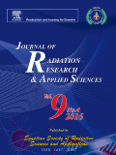
Journal of Radiation Research and Applied Sciences
Empowering global collaboration in radiation research and applications.Journal of Radiation Research and Applied Sciences, published by ELSEVIER, is a premier open-access journal since 2013, dedicated to advancing the understanding and application of radiation research in various fields. With an ISSN of 1687-8507, this journal serves as a vital resource for researchers, professionals, and students engaged in the study of the physical and biological effects of radiation, radiation physics, and its applications in medicine and industry. Its rigorous peer-review process ensures the dissemination of high-quality research that meets the growing demands for innovative solutions in radiation science. By offering comprehensive access options, the journal promotes an inclusive approach to sharing knowledge with the global community. The Journal of Radiation Research and Applied Sciences stands out as a key platform for scholarly communication, fostering advancements that impact both theory and practice in the rapidly evolving landscape of radiation research.
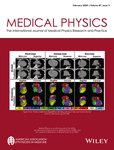
MEDICAL PHYSICS
Pioneering Research at the Intersection of Technology and HealthcareMEDICAL PHYSICS, published by WILEY, stands as a leading journal in the fields of biophysics, medicine, and radiology, boasting an impressive impact factor and classified within the prestigious Q1 category across multiple relevant domains. With its ISSN 0094-2405 and E-ISSN 2473-4209, the journal has been a vital resource since its inception in 1974, leading the discourse well into 2024. Hailing from the United States, MEDICAL PHYSICS serves a diverse academic audience, comprising researchers, clinicians, and students eager to engage with the latest advancements and methodologies. The journal’s authoritative presence is underscored by its Scopus rankings, placing it among the top percentile in both Medicine and Biophysics, marking it as an essential scholarly platform for innovative research and critical reviews. While not currently an Open Access journal, its commitment to curating high-quality articles ensures that readers can access groundbreaking insights into medical imaging, treatment protocols, and the theoretical underpinnings of medical physics. Explore the intersection of technology and healthcare through the esteemed pages of MEDICAL PHYSICS.

Physics & Imaging in Radiation Oncology
Transforming Patient Care with Cutting-Edge Physics and Imaging TechniquesPhysics & Imaging in Radiation Oncology is a premier journal dedicated to advancing the interdisciplinary field of radiation oncology through innovative research and imaging technologies. Published by Elsevier, this open-access journal has made its mark since its inception in 2017, ensuring that groundbreaking findings are accessible to a broad audience. With a strong focus on the integration of physics, imaging techniques, and oncology, the journal occupies esteemed positions in the academic landscape, ranking in the top quartile for Radiation and Radiology, Nuclear Medicine and Imaging as of 2023. The journal serves as a platform for researchers, professionals, and students to share insights and foster collaboration, ultimately improving patient outcomes through enhanced imaging and treatment modalities. Based in Ireland and operating from Radarweg 29, 1043 NX Amsterdam, Netherlands, the journal aims to bridge the gap between theoretical physics and practical applications in clinical settings.
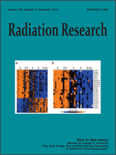
RADIATION RESEARCH
Advancing knowledge in radiation science and health.RADIATION RESEARCH is a prestigious journal published by the RADIATION RESEARCH SOC that serves as a vital resource for professionals and researchers in the fields of biophysics, radiation science, and radiology. Established in 1954, this journal has consistently advanced the study of radiation's effects on health and the environment, bridging fundamental and applied research. It boasts an impressive impact factor reflected in its quartile rankings, including Q2 in Biophysics and Q1 in Radiation, making it a highly regarded publication within its discipline. Researchers will find valuable insights through rigorous peer-reviewed articles that explore innovative methodologies and findings related to radiation exposure, imaging technologies, and the biological consequences of radiation. Although the journal does not currently offer open access, it remains a vital reference for academia and industry, fostering a deeper understanding of radiation sciences and their implications for future research and public health.
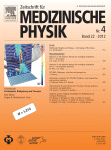
Zeitschrift fur Medizinische Physik
Exploring the nexus of physics and healthcare.Zeitschrift für Medizinische Physik is a prominent academic journal dedicated to advancing the field of medical physics, published by ELSEVIER. With an ISSN of 0939-3889 and an E-ISSN of 1876-4436, this journal has transitioned to an Open Access model since 2022, ensuring that cutting-edge research is readily accessible to a global audience. Based in Germany at RADARWEG 29, 1043 NX AMSTERDAM, NETHERLANDS, the journal encompasses a wide array of topics related to medical physics, thereby facilitating interdisciplinary collaboration. Its impressive categorization includes Q3 in Biophysics and Q2 in both Radiological and Ultrasound Technology and Radiology, Nuclear Medicine and Imaging as of 2023, reflecting its significant contribution to the scientific community. In the Scopus rankings, it holds respectable positions in its categories: #143/333 in Radiology and Nuclear Medicine, #28/63 in Radiological and Ultrasound Technology, and #83/152 in Biophysics, demonstrating its influence and reach. The journal's focus is not only on publishing innovative research but also on fostering education and discussion among researchers, professionals, and students in medical physics. Zeitschrift für Medizinische Physik invites scholars at all levels to contribute and engage with the content that shapes the future of this vital field.